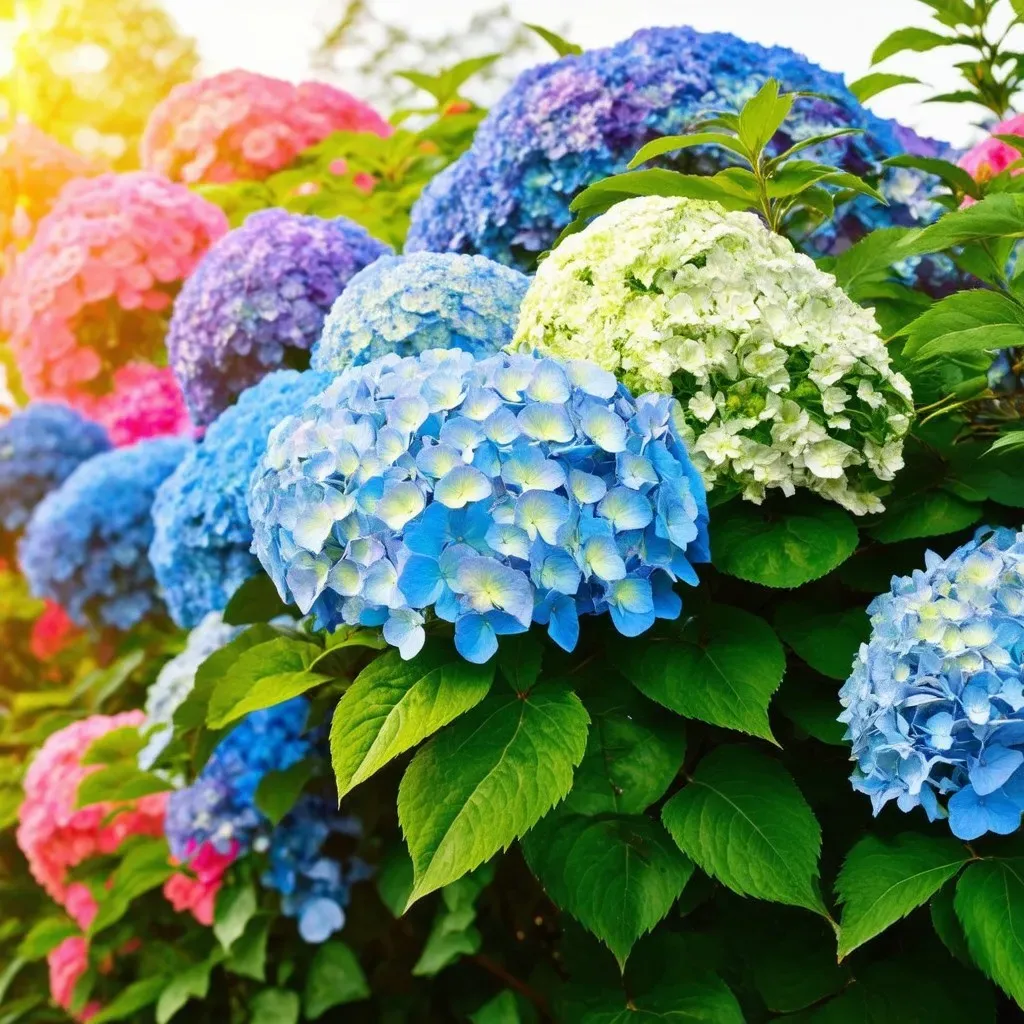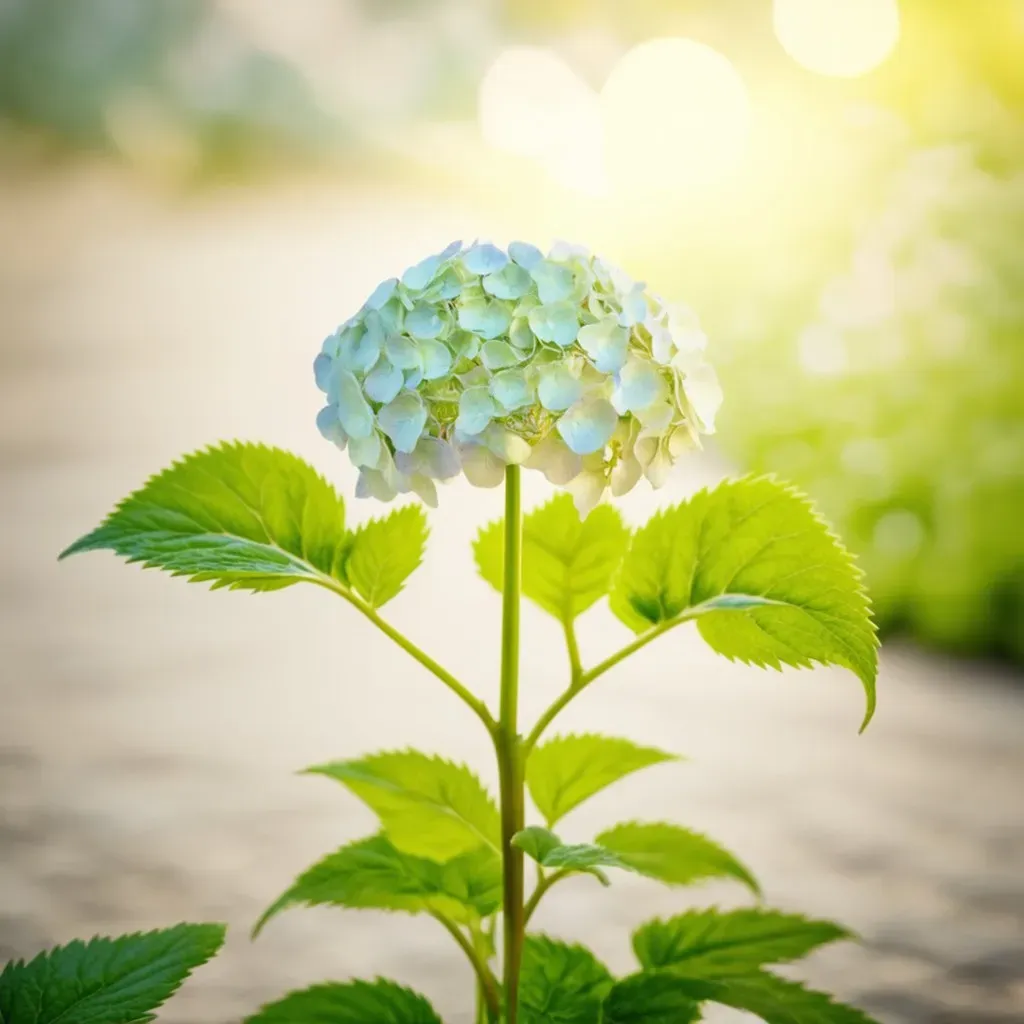Hydrangeas are one of the most loved flowering shrubs in gardens across the UK. Their vibrant blooms and ability to adapt to various climates make them a go-to choice for gardeners. When you decide to Buy Hydrangeas, it’s essential to consider both the aesthetic and practical aspects, such as plant type, growing conditions, and what suits your garden’s design best.
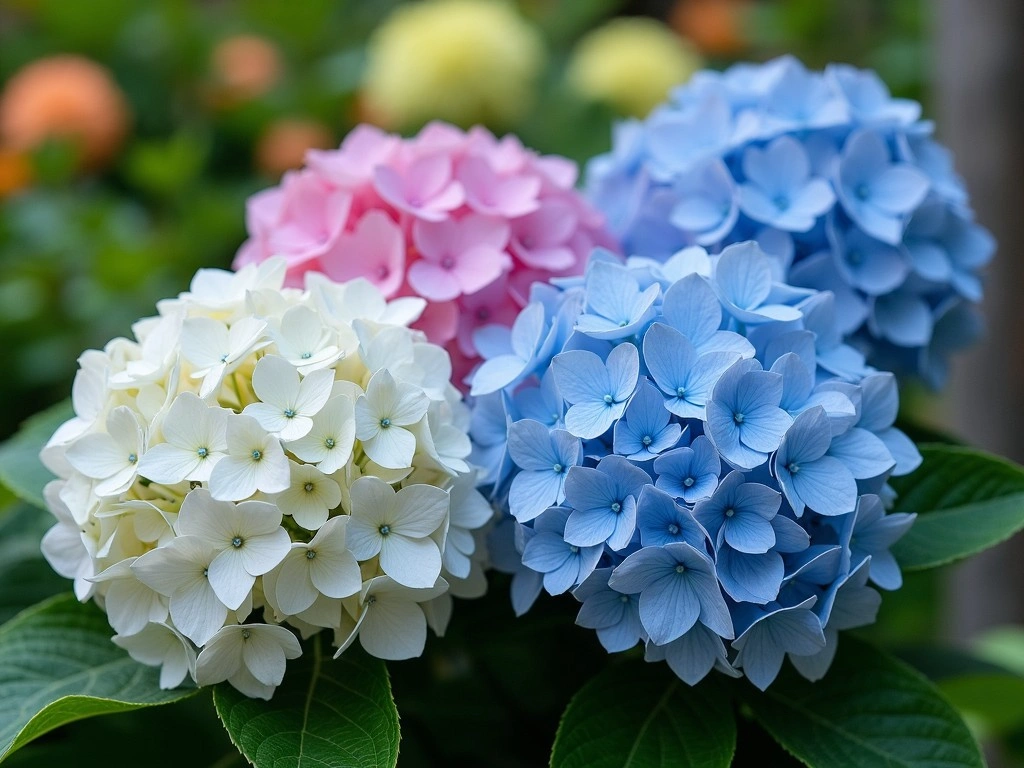
hydrangea Sales Statistics
According to the National Garden Survey, nearly 40% of UK gardens feature hydrangeas, validating their popularity. In 2022 alone, the UK saw an increase in hydrangea sales by 15%, indicating a growing love for these lush blossoms. The average price for young plants ranges from £10 to £25, depending on the type and size.
| Hydrangea Type | Average Price | Popularity (%) |
|---|---|---|
| hydrangea macrophylla | £15 | 25% |
| Hydrangea paniculata | £20 | 20% |
| Hydrangea arborescens | £12 | 15% |
| Hydrangea quercifolia | £18 | 10% |
By keeping in mind your budget and preferences, you can make an informed choice about which hydrangea to incorporate into your landscape.
According to the National Garden Survey, nearly 40% of UK gardens feature hydrangeas.
Different types of hydrangeas
Understanding the various Hydrangea Types is pivotal for selecting the right one for your garden. Some common types include:
- Hydrangea macrophylla: Also known as bigleaf hydrangeas, they are famous for their large, globe-like blooms. They are particularly well-suited for partially shaded areas and need a good amount of moisture.
- Hydrangea paniculata: These hydrangeas are known for their conical flower clusters and are notably hardy, tolerating full sun and a range of soil conditions.
- Hydrangea arborescens: Known for the famous “Annabelle” variety, these hardy hydrangeas produce large white blooms, making them an ideal choice for informal gardens.
- Hydrangea quercifolia: Also called oakleaf hydrangeas, they produce unique, lobed leaves and have beautiful flowers that turn into stunning fall foliage.
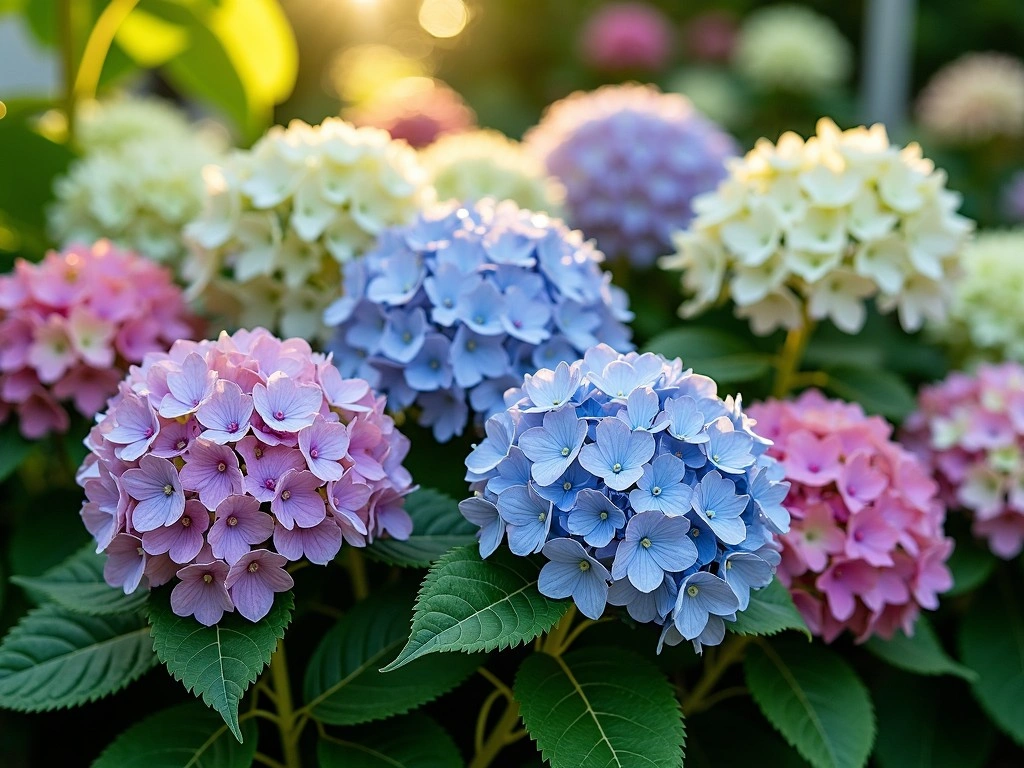
Statistics on Hydrangea Preferences
Recent landscape studies highlight that Hydrangea macrophylla dominates the market, with 40% of gardeners opting for this versatile selection. In contrast, Hydrangea paniculata is gaining popularity among modern gardeners who prefer hardiness.
| Hydrangea Type | Garden Use | Current Market Share (%) |
|---|---|---|
| Macrophylla | Landscaping | 40% |
| Paniculata | Urban Gardens | 30% |
| Arborescens | Cottage Gardens | 15% |
| Quercifolia | Shade Gardens | 10% |
Essential Care for Hydrangeas
Proper Hydrangea Care is crucial to ensure that your plants thrive and produce beautiful blooms. Here are some key considerations:
Watering Guidelines
Hydrangeas require consistent moisture, especially in the growing season. Ideally, they should receive about 1 inch of water per week, either from rainfall or through irrigation.

Soil Composition
The best soil for hydrangeas is well-draining with a pH of around 5.5 to 6.5. Testing your soil is essential because different hydrangeas can thrive in varying conditions. Amending your soil with compost can significantly improve plant vigor.
Light Requirements
Most hydrangeas prefer partial shade but can tolerate full sun depending on the variety. Too much sun can result in scorched leaves, while too little can inhibit blooming.
Fertilizing Hydrangeas for Best Growth
Hydrangea Fertilizers play a vital role in maintaining plant health and encouraging vibrant blooms. The right mix will enhance growth and keep your plants looking lush.
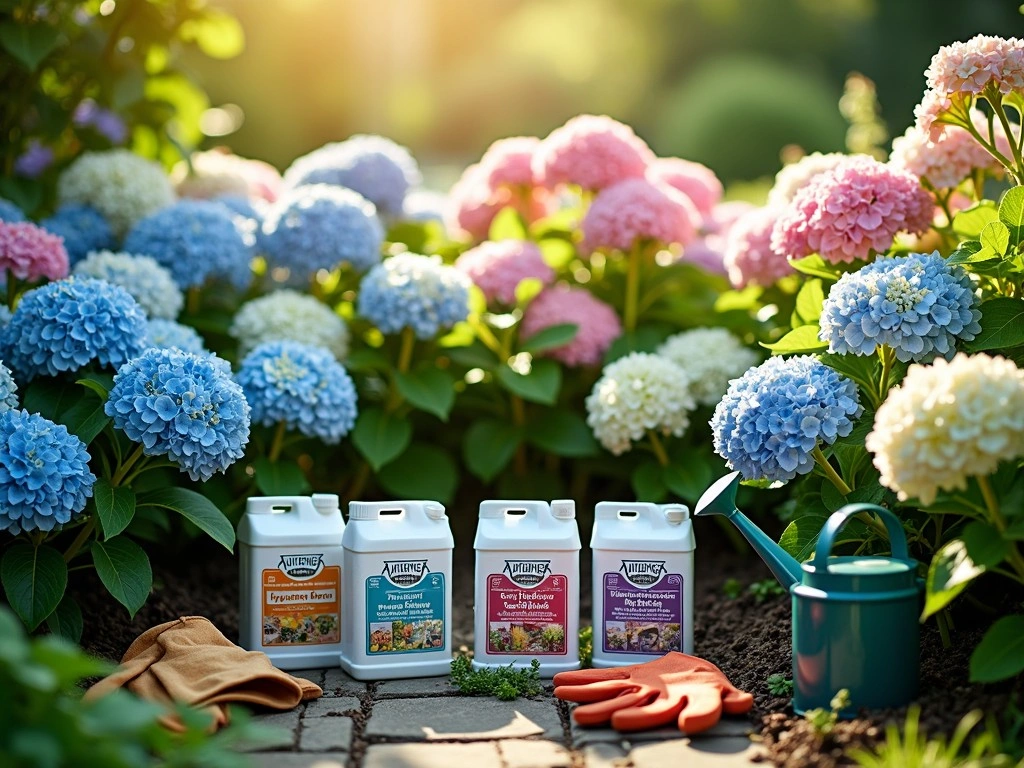
Timing and Frequency
Fertilizing hydrangeas is best done in early spring, just as new growth begins. A balanced fertilizer (like a 10-10-10 mix) or one specifically formulated for flowering shrubs will yield the best results. Heavy bloomers may require feeding every 6 to 8 weeks during the growing season.
Nutritional Needs
Hydrangeas benefit from fertilizers rich in potassium and phosphorus to boost flower production. A soil test can provide insights into deficiencies and guide your fertilization strategy.
Common Hydrangea Problems and Solutions
Despite their beauty, hydrangeas can face several challenges. Recognizing Hydrangea Problems early on can help salvage your plants.

Pest Issues
Common pests include aphids, spider mites, and scale insects. Regular inspections can help manage infestations. Organic insecticidal soaps can provide effective treatment when identified early.
Disease Management
Root rot and powdery mildew are the most prevalent diseases affecting hydrangeas. Planting in well-draining soil and providing adequate air circulation can minimize these risks.
Best Hydrangeas for Your Landscape
Choosing the Best Hydrangeas depends on various factors such as climate, soil type, and personal preference. Here are some standout varieties:
- Endless Summer®: This repeat-blooming hydrangea provides blooms from spring to fall and adapts well to various conditions.
- Limelight: A paniculata type that stands out for its creamy white to pale green blooms, perfect for cut arrangements.
- Annabelle: Known for its massive white flower heads, this arborescens species thrives in cooler climates.
Tree vs. Shrub Hydrangeas
When considering sizes, tree hydrangeas like Hydrangea paniculata can serve as focal points in your garden, while shrub varieties provide lush hedging.
| Hydrangea Type | Best Use | Recommended Varieties |
|---|---|---|
| Macrophylla | Foundation Plant | Blossoms Anytime, Endless Summer |
| Paniculata | Focal Point | Limelight, Little Lime |
| Arborescens | Borders | Annabelle, Incrediball |
| Quercifolia | Shade Gardens | Gatsby Star, Snowflake |
The Colorful World of Hydrangeas
One of the remarkable features of hydrangeas is their ability to change color based on soil pH. Hydrangea colors & blooms can range drastically depending on the environmental conditions.
Color Changes Explained
- Acidic soils (pH below 6) typically yield blue flowers due to increased aluminum availability.
- Neutral to alkaline soils (pH above 6) lead to pink flowers, as aluminum is less accessible.
Learn more about how soil pH affects flower color in hydrangeas at The American Phytopathological Society.
Bloom Shapes and Sizes
Hydrangea blooms can vary significantly, from large mophead clusters to delicate lacecaps, providing gardeners with a wide array of options.
A Comprehensive Planting Guide for Hydrangeas
Successfully planting hydrangeas involves careful attention to timing, location, and preparation. The ideal time to plant these shrubs is in spring or fall.
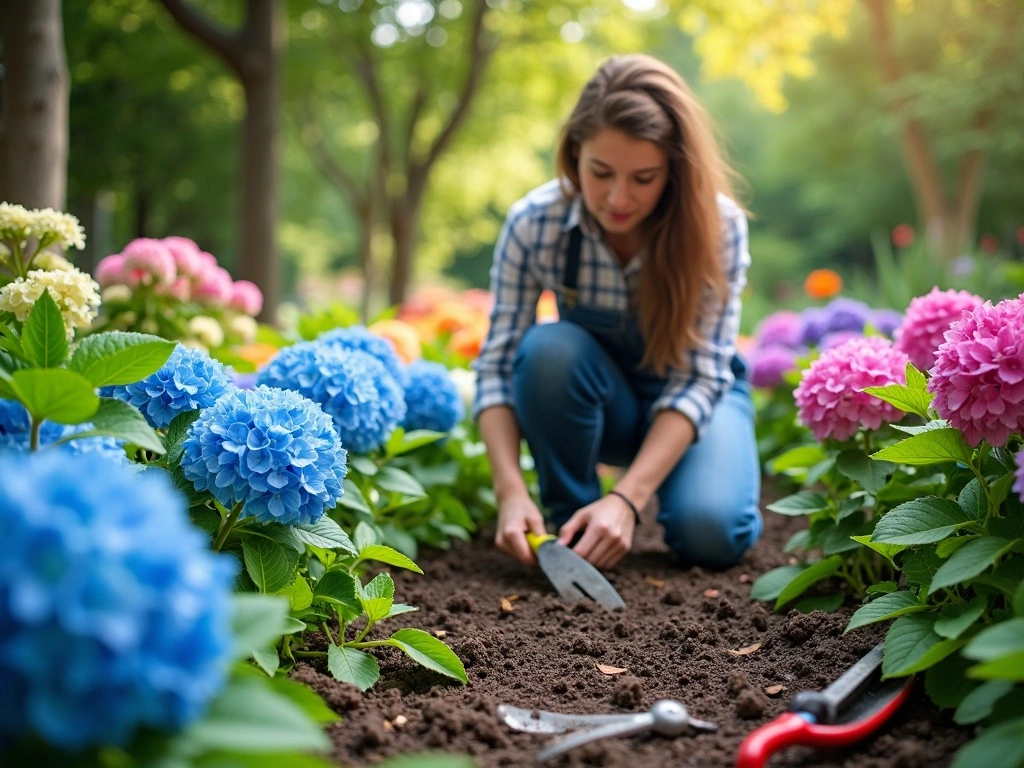
Ideal Planting Conditions
Choose a location that receives morning sun and afternoon shade, or dappled sunlight. Ensure adequate spacing between plants, depending on the variety; larger types typically require more room.
Step-By-Step Planting Instructions
- Soil Preparation: Till the soil to a depth of around 12 inches and mix in compost or peat moss.
- Digging the Hole: Create a hole twice as wide as the root ball but no deeper than the root ball itself.
- Watering: Water thoroughly after planting; ongoing moisture is essential during the establishment phase.
Companion Plants for Hydrangeas
Selecting Companion Plants can enhance the aesthetic and health of your hydrangea garden. Good companions include:
- Hostas: Their shade-tolerant foliage contrasts beautifully with hydrangea blooms.
- Astilbes: These provide color during the blooming period and thrive in similar conditions.
- Ferns: These also flourish in shaded environments and create a lush, woodland feel.
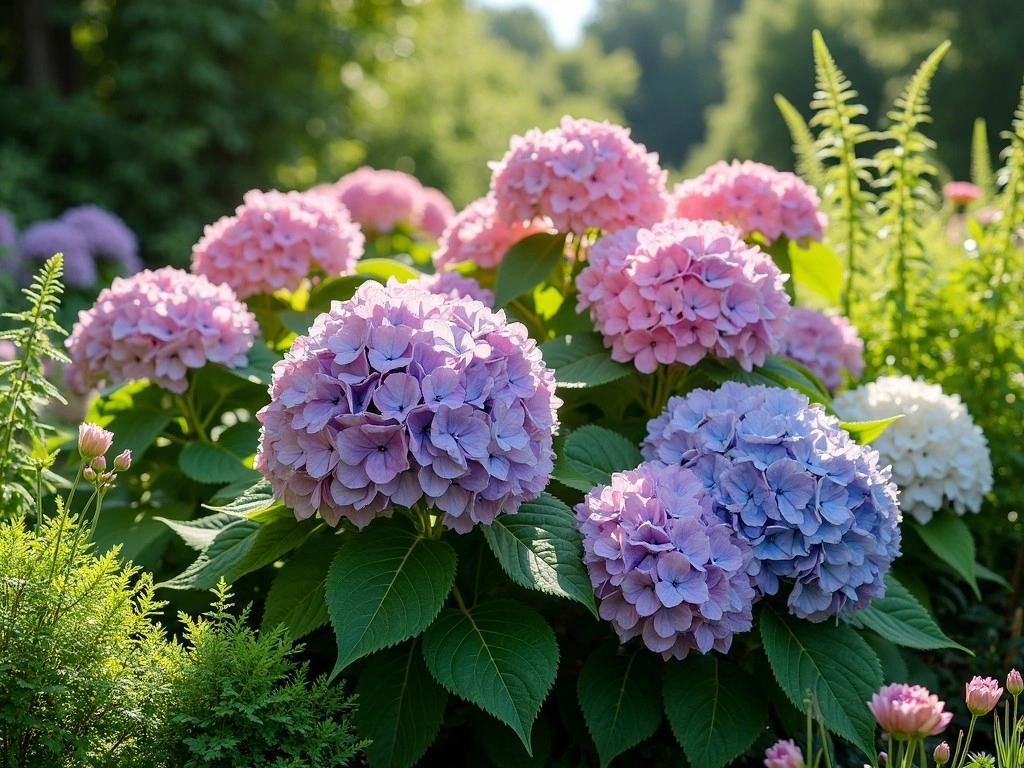
Benefits of Companion Planting
Companion planting can deter pests, improve soil health, and even enhance flowering. Be mindful of the growth habits and water needs of your companion plants to ensure compatibility.
Pruning Tips for Hydrangeas
Regular pruning is essential for maintaining the health and appearance of your hydrangeas. The method and timing will vary depending on the variety.

General Pruning Guidelines
- Macrophylla: Prune in late winter or early spring, removing dead or weak stems while keeping healthy buds.
- Paniculata and Arborescens: These types can be pruned in late fall or early spring to encourage new growth.
Tools for Pruning
Use clean, sharp pruning shears to make clean cuts, minimizing stress on the plant. A handsaw may be necessary for thicker branches.
| Timing | Type | Pruning Method |
|---|---|---|
| Late Winter | Macrophylla | Remove dead stems |
| Early Spring | Paniculata, Arborescens | Light shaping |
| Late Fall | All types | General maintenance |
